…And we’re not talking about a guy who drives a semi. Semiconductors are designed for fast, current-limiting protection of sensitive semiconductor devices like diodes, thyristors, and transistors, commonly found in power equipment and electronics.
If you keep up with the current news, you’ve probably heard of the resurgence of semiconductors. The Creating Helpful Incentives to Produce Semiconductors and Science Act (CHIPS and Science Act) aims to revitalize U.S. semiconductor manufacturing and research.
In fact, the U.S. is projected to triple semiconductor manufacturing capacity by 2032. Emerging technologies like AI have also bolstered the industry. In turn, it is hoped this law will create American jobs, support American innovation, and protect our national security.
Mersen is a leading manufacturer of semiconductor fuses. National Fuse is a licensed distributor of Mersen products. Below is an informative video to explain how semiconductors are produced.
Blog
Mersen Load Break Switch
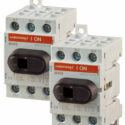
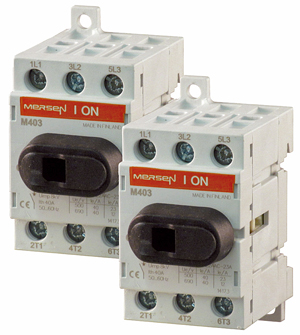
The M-series Load Break Switch is the most compact industrial-grade switch on the market. Capable of making or breaking loads up to 600V (UL), it is suitable as a motor disconnect. Extremely compact and robust, these switches have a variety of mounting options including DIN-rail, base, or door-mounting. A wide assortment of handles, shafts and accessories are available to accommodate any installation requirement. The benefits of this switch are: line-of-sight disconnect, electrical isolation, branch-circuit switch, and motor disconnect.
NOW $47.95 FOR A 2-PACK WHILE SUPPLIES LAST!!
2-Pack of Mersen Part #M403-2PK Non-Fused Disconnect Switch
NEW Shock Block GFCI
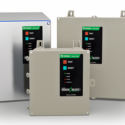
Companies that take their employee safety seriously are now using the new Littelfuse SB5000 3-phase GFCI “Shock Block” for industrial shock protection. The SB5000 not only provides electrical shock protection, but also reliable performance and will proactively trip when necessary. The SB5000 GFCI protects commercial kitchens, vehicle service centers, and other non-dwelling applications from electrical hazards typically found in damp environments.
Andrew Peller Winery, a Canadian company, installed the Littelfuse Shock Block GFCI 3-phase 600 V unit in one of their production facilities on a trial basis. Click here to read how the Shock Block SB5000 provided a solution that exceeded the customer’s expectations in performance and reliability. Learn more about how Shock Blocker works by viewing the video below.
New SM10 Varistor Series
Earlier this year, Littelfuse announced the SM10 Varistor Series, a revolutionary Metal Oxide Varistor (MOV) designed to provide superior transient surge protection in:
- Automotive electronics
- Electric vehicles and charging stations
- Building automation
- Appliances
- Consumer electronics
- Power storage systems
- High-end power supplies

The compact SM10 Varistor Series has a vertical surface-mount design and is capable of withstanding high operating temperatures while offering ultra-high surge protection. The SM10 Series is AEC-Q200 compliant, enabling end-products to work in harsh ambient environments for longer lifetimes. For more in-depth technical information, view the SM10 Series Datasheet.
National Fuse is a licensed distributor for Littelfuse products. If you are interested in placing a sample request of the SM10 Varistor Series (available in tape and reel quantities of 300), please email us at sales@nationalfuse.com
Arc Flash Seminars Now Available Nationwide via Zoom!
National Fuse sponsors ARC Flash Seminars throughout the year in order for individuals to get the OSHA-required certification. Due to COVID, we are now offering attendance via Zoom.
Interested in getting certified? Click here for more information on our next seminar and to view the full seminar flyer. The instructor Jack Bene is a licensed National Electrical Codes (NEC) Instructor and has completed over 150 flash studies for commercial and industrial facilities. In addition, Jack has trained several hundred companies on arc flash hazards, shock and electrocution hazards, grounding, over current protection and general national electrical code topics.
The new National Fire Protection Association (NFPA) 70E-2021 110.5 (3) regulation reads “additional training and retraining in safety-related work practices and applicable changes in this standard shall be performed at intervals not to exceed 3 years.” A course completion certificate will be provided which establishes your compliance of the NFPA 70E training/retraining protocols.
Who should attend: contractors, electricians, engineers, technicians, safety personnel, and plant managers. Groups or company-wide scheduling are also welcome. To register contact either Mark or Angie at 1-800-328-0496. Zoom link & credentials will be forwarded upon registration.
We’re Growing!
Thanks to our great customers, National Fuse Products warehouse and office space has recently expanded! We continue growing to better serve you and your product needs. Below are a few photos of our space, along with a few vintage autos the owner has collected. Some employees even use the Ford truck to deliver products to our great local customers!
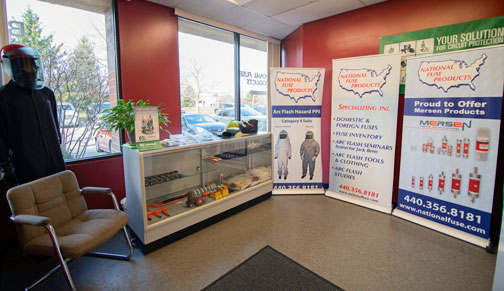
Entrance to the office space showcasing Cementex supplies and training materials.
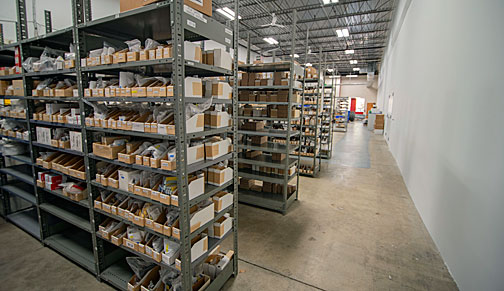
Part of our new warehouse space – that’s a lot of fuses!
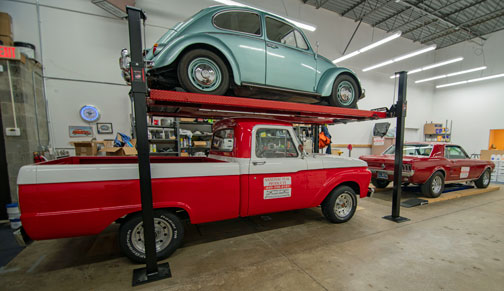
Owner’s vintage autos housed at the National Fuse Products warehouse.
Fail-Safe Surge Protection Device
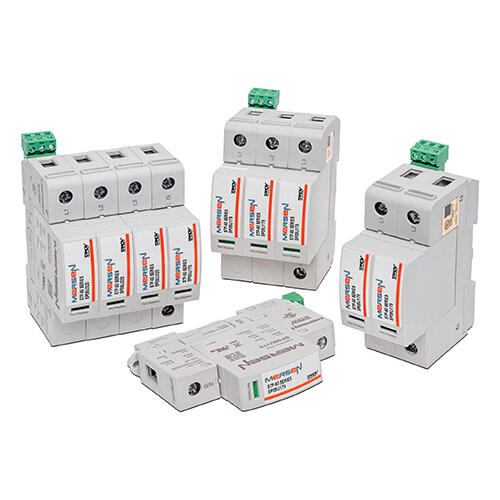 Looking for a fail-safe surge protection device? National Fuse Products is excited to introduce Mersen’s latest addition – the Surge-Trap Pluggable STP-50 series. The Mersen STP-50 Series is a no-fuse, fail-safe surge suppressor with a 50kA short circuit rating, suitable for most industrial control panels.
Looking for a fail-safe surge protection device? National Fuse Products is excited to introduce Mersen’s latest addition – the Surge-Trap Pluggable STP-50 series. The Mersen STP-50 Series is a no-fuse, fail-safe surge suppressor with a 50kA short circuit rating, suitable for most industrial control panels.
With Mersen’s TPMOV technology inside, there is no need for additional over current protection. A reversible chassis allows cable entry from top, or bottom and a remote indicator provides status to critical control circuitry.
The STP-50 series is designed with a new enhanced base and a DIN-rail clip for easy installation. The STP-50 Series comes with a 5-year warranty. Applications include industrial control panels, water treatment plants, smart grid and LV metering, and intelligent transportation systems. National Fuse is a licensed Mersen distributor. You can find more information about the Mersen STP-50 series here on the NFP website
Selecting the Correct Fuse For Your Application
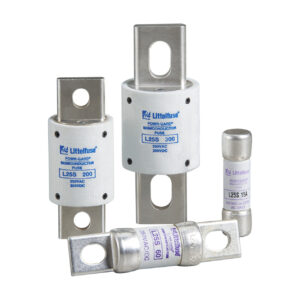 Choosing the correct fuse for your application can be overwhelming and time-consuming – even for a seasoned electronics design engineer. Our thanks to Littelfuse who created a user-friendly guide in making the fuse selection process quick and easy as well as optimizing the reliability and performance. National Fuse is a licensed distributor of Littelfuse fuses and products. Below is a summary of the main factors you should consider in selecting the correct fuse. To view the entire guide, click here.
Choosing the correct fuse for your application can be overwhelming and time-consuming – even for a seasoned electronics design engineer. Our thanks to Littelfuse who created a user-friendly guide in making the fuse selection process quick and easy as well as optimizing the reliability and performance. National Fuse is a licensed distributor of Littelfuse fuses and products. Below is a summary of the main factors you should consider in selecting the correct fuse. To view the entire guide, click here.
1. Normal Operating Current – The current rating of a fuse is typically derated 25% for operation at 25 ºC to avoid nuisance opening. For example, a fuse with a current rating of 10 A is not usually recommended for operation at more than 7.5 A in a 25 ºC ambient.
2. Application Voltage – The voltage rating of the fuse must be equal to or greater than the available circuit voltage.
3. Ambient Temperature – The current-carrying capacity tests of fuses are performed at 25 ºC and will be affected by changes in ambient temperature. Ambient temperature is the air temperature of any object or environment where equipment is stored. The higher the ambient temperature, the hotter the fuse will operate and the shorter its life. Conversely, operating at a lower temperature will prolong fuse life.
4. Overload Current Condition – Determine the current level for which protection is required. Fault conditions may be specified, either in terms of current or in terms of both current and maximum time the fault can be tolerated before damage occurs.
5. Maximum Fault Current – The interrupting rating of a fuse must meet or exceed the maximum fault current of the circuit.
6. Pulses – The general term “pulses” used in this context is to describe the broad category of wave shapes referred to as surge currents, start-up currents, inrush currents, and transients. Electrical pulse conditions can vary considerably from one application to another. Different fuse constructions may not react the same to a given pulse condition.
7. Physical Size Limitations – Refer to the product dimensions presented in current Littelfuse product datasheets for specific information.
8. Agency Approvals – For background information about common standards, consult the Standards and Certifications section of this guide.
9. Fuse Features – Consult the specific product features presented on the website at Littelfuse.com. For additional information and support, contact your Littelfuse or National Fuse product representative.
10. Fuseholder Rerating – For 25 ºC ambient temperatures, it is recommended that fuseholders be operated at no more than 60% of the nominal current rating established using the controlled test conditions specified by Underwriters Laboratories.
11. Testing – Verify your selection by requesting samples for testing in the actual circuit. Always make sure the fuse is properly mounted with good electrical connections, using adequately sized wires or traces.
Advanced Charging Solutions for Next-Gen Commercial EVs
 Ever wonder how heavy-duty and commercial electric vehicles get electrically charged? The following information is sponsored by Littelfuse. You can read the full article here. National Fuse Products is a licensed distributor of Littelfuse products.
Ever wonder how heavy-duty and commercial electric vehicles get electrically charged? The following information is sponsored by Littelfuse. You can read the full article here. National Fuse Products is a licensed distributor of Littelfuse products.
As the electrification of heavy-duty or commercial vehicles gains more acceptance, charging larger batteries than the ones in electric passenger cars increases in importance. Because time is money, especially in logistics, the preferred options are increasing charging power or assigning idle times for charging. These preferences result in three different charging scenarios:
Scenario 1: Depot-Charging and Fleet Operation
Modern battery technologies and cutting-edge power semiconductor solutions allow the design of highly efficient infrastructure. The image above depicts contemporary depot charging for bus fleets. Depot charging is the best option for local fleet operations, particularly for buses and delivery vehicles. These are operated on relatively fixed routes and are idle during night-time hours.
Scenario 2: Opportunity Charging
Fleet vehicles operating along predefined routes open the option to extend the driving range by adding smaller amounts of energy more frequently. Called opportunity charging, this works best if it takes place in a fully automated manner. There are two recommended solutions for opportunity charging. Mechanical systems, known as pantographs, allow large electric contacts to move over larger distances and safely contact their counterparts. A proven reliable technology, pantographs are widely used in tramways and railway applications. Pantographs are separated into top-down and bottom-up systems depending on the mounting position.
Scenario 3: Individual Long-Haul Operation
Traveling on random routes, as long-haul logistics demands, requires individual high-power charging similar to today’s gas stations. This high-power charging needs to become part of the existing infrastructure to allow for the seamless integration of electric trucks into the mobility sector. With a DC voltage up to 1500 V and a maximum charging current up to 3000 A, charging at rates exceeding 2 MW becomes possible. At 2 MW charging, 500 kWh to go another 300 km can be delivered in about 15 minutes which is well covered by the breaks a driver must take to comply with legal requirements. However, urban low-voltage 3-phase grids up to 400 V would not support this power level.
No More Trips To The Breaker Box
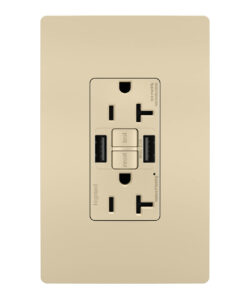 Remember the days when you tripped a fuse sending you to the breaker box to fix it? Not anymore. Legrand (who owns Pass & Seymour) now offers an all-in-one solution giving you reliable, code-compliant ground fault protection for all indoor and outdoor areas.
Remember the days when you tripped a fuse sending you to the breaker box to fix it? Not anymore. Legrand (who owns Pass & Seymour) now offers an all-in-one solution giving you reliable, code-compliant ground fault protection for all indoor and outdoor areas.
With the number of mobile devices used these days, Legrand went a step further and designed the first-of-its-kind, all-in-one GFCI USB outlet. The outlet features two USB connections to keep devices charged and ready. With versions designed for residential, commercial, and healthcare applications, any project can gain the superior safety of self-testing, point-of-use GFCI protection and the modern convenience of built-in charging, all in a single device.
While everyone is elated at the prospect of never having to chase down a charger for their device, some do have a few questions about the installation process and cost.
If you want to DIY it, the DIY job starts with turning off the power to the outlet from your electrical panel. Use a multimeter or outlet tester to verify that there is no power to the outlet. Then, you can use a screwdriver to remove the exterior wall plate and remove the screws mounting the outlet to the wall box behind it. Further instructions can be viewed in following video.
COMMON QUESTIONS
Q: If you want to hire someone to install the GFCI, who should you call?
The USB charging receptacle installs the same as a standard outlet, so any electrician should be able to do it.
Q: Will switching to a USB outlet affect your electricity bill?
No, USB receptacles do not affect electricity costs because they provide the same amount of power as the USB charging cord phone manufacturers include with a phone. Unlike the standard outlets, the benefit of a GFCI outlet is it is designed to monitor current flow and will trip the circuit if it detects any variation in the flow, preventing surges and electrocution.
Q: What is the cost to replace a standard 120V outlet?
Expect to pay everywhere from $125 to $175 to replace or install a standard 120V outlet.
National Fuse Products carries a full line of Pass & Seymour Legrand products, including the new GFCI USB outlets. National Fuse is currently offering special pricing on 125 volt outlets – on sale now for only $37.95 (20 amp) and $36.95 (15 amp)! To view specs and to place an order: 20 amp outlet and 15 amp outlet.
OSHA Required Electrical Glove Testing
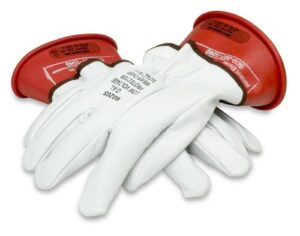 Insulating electrical gloves are critical PPE (personal protective equipment) for electrical work on or near exposed energized parts. Electrical gloves must be rated for the voltage to which a worker will be exposed (phase to ground or phase to phase) and marked to indicate their rating. There are different classes of electrical gloves and our staff can provide you with the right class for the voltage that you will be working on. The classes are as follows: Class 00 / Class 0 / Class 1 / Class 2 / Class 3 / and Class 4.
Insulating electrical gloves are critical PPE (personal protective equipment) for electrical work on or near exposed energized parts. Electrical gloves must be rated for the voltage to which a worker will be exposed (phase to ground or phase to phase) and marked to indicate their rating. There are different classes of electrical gloves and our staff can provide you with the right class for the voltage that you will be working on. The classes are as follows: Class 00 / Class 0 / Class 1 / Class 2 / Class 3 / and Class 4.
OSHA requires that electrical gloves must be tested at regular intervals of every 6 months for gloves in use and once a year for gloves still in their box or bag. Once the gloves are tested, they are date stamped and the clock starts ticking again. If an employee is found to be using out-of-date gloves, OSHA may issue a fine to the company of up to $500 per each pair of gloves.
For years now, National Fuse has been offering companies solutions for handling their OSHA required electrical glove testing. The National Fuse Electrical Glove Program is easy to enroll in. Here is how it works:
- It does not matter if you buy new gloves from us or have existing gloves – National Fuse can provide proper testing following OSHA protocol.
- Testing is done by our Certified Technicians.
- We will keep accurate records for your company’s reference.
- We will follow up with you after (5 months) to remind you that your gloves will be expiring soon and need to be sent out for testing.
- If you are located within 1-1/2 hours drive time from our facility, we will pick up the gloves needing testing and return them after testing.
- If you are located more than 1-1/2 hours from our facility, you will need to ship the gloves to us and we will ship the gloves back after testing.
- The best way to handle glove testing is to have two pairs of gloves for each of your Techs – one (black) pair for the first 6 months and a second (red or yellow) pair so you can rotate these gloves every 6 months.
- The cost for testing per pair is very affordable.
“I highly suggest National Fuse for your electrical glove testing needs.
They know their business and are great to work with.”
~ Jack Bene, licensed National Electrical Codes Instructor
Leave the glove testing to National Fuse so you know you’re covered and can spend more time on running your business. Call us today at 800-328-0496 and ask for Mark Zell or Angie Graham or email us at sales@nationalfuse.com and we will enroll you in our glove testing program. National Fuse Products also carries a variety of Cementex protective equipment which can be found on our Cementex product page.
Fuses Everywhere – Every Day
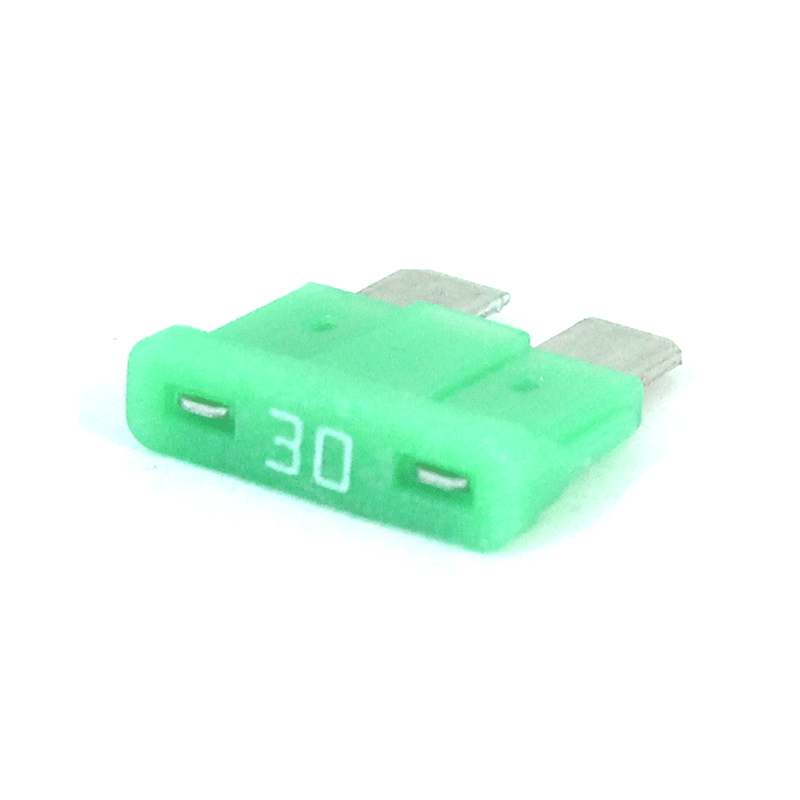
Have you ever considered how much your everyday life depends on the use of various fuses and diode arrays to protect against the effects of electrostatic discharge? Let’s face it – protection against the effects of electrostatic discharge is an essential requirement for any manufacture, home construction, service, repair and any other area in contact with electronic boards and components.
In this video, created by the well-known industrial technology company, Littelfuse, you’ll see how fuses are used every day, and everywhere. National Fuse is pleased to be a licensed distributor of Littelfuse products.
Consider the various devices you use each day:
- Cell phones – Cell phones utilize fuses to protect with polymer ESD suppressors diode arrays. Diode arrays provide protection against electrostatic discharge and electromagnetic Interference.
- Coffee machines – Coffee machines use diode arrays and fuses to protect against electrostatic discharge and a reed switch and sensor to control voltage flow.
- Wearable devices – Devices such as a FitBit use diode arrays, surface mount fuses, resettable PTC fuses which protect against overcurrent.
- Refrigerators – Refrigerators have NTC thermistors which provide decreasing resistance with increasing temperature and PTC thermistors which provide increasing resistance with increasing temperature.
- Dishwashers – Ever wonder how dishwashers know when to change cycles? They utilize a float switch which senses the liquid level to operate a switch.
- Microwave – Many people use a microwave at least once a day. Microwaves contain PICO fuses (which are made by Littlefuse). A Pico fuse protects the head unit in the case of a bad ground connection.
- Laptops – Your laptop contains diode arrays surface mount fuses to protect against overcurrent.
- Printers – Your printer contains radial level varistors (MOVs) – a form of transient voltage surge suppressor used to protect circuit board components.
“Stay Safe” from Arc Flash
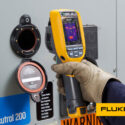
This past year has been one of major adjustments for us all in work and lifestyle due to the COVID virus. In place of using “best regards” as a standard closure to email communications, the norm has now become “stay safe.” In addition, we have all taken precaution by social distancing and wearing facial masks while out in public.
Staying safe in the workplace with large electrical and industrial control panels, requires its own “protection mask”. Every time you open a panel cover, you expose yourself to the potential dangers of arc flash. A newer and proven protection method of live electrical equipment inspection is infrared thermography offered by the Fluke ClirVu® IR Window. Once a ClirVu® IR Window is installed, there’s no longer a need to power down or remove panels. Inspections are conducted quickly, easily, and most importantly, safely.
National Fuse Products offers the Fluke ClirVu® CV300 75 mm (3 in) Infrared Window. It’s a great time to order since it’s at the new featured product sale price of $328.98 for a limited time! You can find more information about the ClirVu CV300 below.
Your Peace of Mind | 2020 NEC Revision
How much is your peace of mind worth to know that you are protecting your home from unseen, dangerous electrical surges in addition to complying with the latest National Electric Code (NEC)? Power surges are an issue because they can damage or destroy plugged-in electrical devices. When too much electricity flows through an appliance at once, the appliance could overheat, break down, or even catch fire.
The NEC is updated every 3 years. The 2020 NEC revision contains a few revolutionary changes for surge protective devices as shown in the video below.
The Mersen® Surge-Trap® Series Surge Protection Device (SPD) safeguards whole house appliances and electronics, including residential air conditioning and furnace units from costly voltage surge events, such as fluctuations in power often generated from inside a home or building, or from an outside source like lightening.
National Fuse Products is a licensed distributor of Mersen® products and highly recommends the Mersen® Surge-Trap® Series SPD for whole house surge protection. For less than $90 for this device, you can now have that peace of mind you are not only protecting your home from a destructive electrical surge event, but also complying with the latest NEC requirements. This device also carries a 3-year warranty. For further information, please visit our product page.
Be Safe Using a Ground Fault Circuit Interrupter
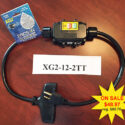
Have you ever considered which is more important – your job or your safety performing the job? You guessed it – your safety is most important. The National Safety Council established June as national safety month. National Fuse Products thought it would be a perfect time to feature one of the more popular circuit interrupters at a sale price of $48.97 (originally $85.70). The Ericson XG2-12-2TT is a portable ground-fault circuit interrupter (GFCI) required by OSHA to be used by all maintenance people in factory environments. For further information or to purchase this item, please visit our Ericson XG2-12-2TT product page.
OSHA Required Insulating Gloves
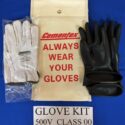
Insulating gloves are critical PPE (personal protective equipment) for electrical work on or near exposed energized parts. Insulating gloves must be rated for the voltage to which a worker will be exposed (phase to ground or phase to phase) and marked to indicate their rating. OSHA requires that the gloves must be electrically tested at regular intervals of not more than 6 months. If gloves are not used for one year and are still in the box or bag they must to be sent out for testing after one year. The gloves are then date stamped and the clock starts ticking again. If an employee is found to be using out-of-date gloves, OSHA may issue a fine of up to $500 to the company. National Fuse Products carries a variety of Cementex protective equipment which can be found on our Cementex product page.
7 Best Fluke Clamp Meters for Industrial Applications
The Fluke high-performance clamp meter with wireless communication, measures very low voltage and very high resistance, plus a VFD low-pass filter for accurate motor drive measurements. National Fuse Products carries a wide variety of Fluke meters. Visit our Fluke product page.
Mersen Solutions for the Wind Industry
Ever wondered how those wind turbines operate efficiently? Mersen, a global expert in electrical power, protection and control, gives you a glance at the improvements that can be made to continuously improve wind turbine component performance and reliability. National Fuse Products is a licensed distributor of Mersen products.
Advantages of Ground Fault Protection at the Point-of-Use
Putting ground fault protection within arm’s reach means easier access for homeowners and fewer callbacks for contractors. Pass & Seymour GFCI receptacle benefits include accessibility & ease of use, simple trouble- shooting, and superior protection. National Fuse Products carries a large inventory of Pass & Seymour products including GFCI receptacles.
What does the “T” and “F” stand for when it comes to fuses?
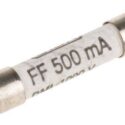
Ever wonder what the “T” stands for when it comes to fuses? If you answered “Timed” – you are correct! Timed is the correct term for a “slow blow fuse” which are often called “time-delay fuses.” There is also a double “TT” rating which denotes very slow blow fuses. Alternatively, “F” stands for “Fast” or “fast acting fuses” with the “FF” rating for ultra-rapid fuses such as the one shown here. The ultra-rapid fuses operate at higher temperatures so are ideal to provide circuit protection to semiconductor devices. The fast-acting fuses are ideal to protect less sensitive components.
A Fuse Is Tripped By Heat, Not Current
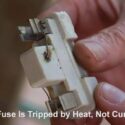
A fuse is not tripped directly by current but rather the current creates heat, and heat trips the fuse. This is known as the “heating effect of electric current.” The amount of heat produced by the flow of current through a fuse wire depends on the following factors: 1-Material of the wire 2-Thickness of wire 3-Length of wire and 4-Amount of current flow. The heat produced due to the high current quickly melts the fuse wire and breaks the circuit. Thus, the flow of current stops and the damage is avoided. Many companies invest in the use of thermography devices to identify heating issues before an electrical failure occurs.
Fuse vs. Circuit Breaker
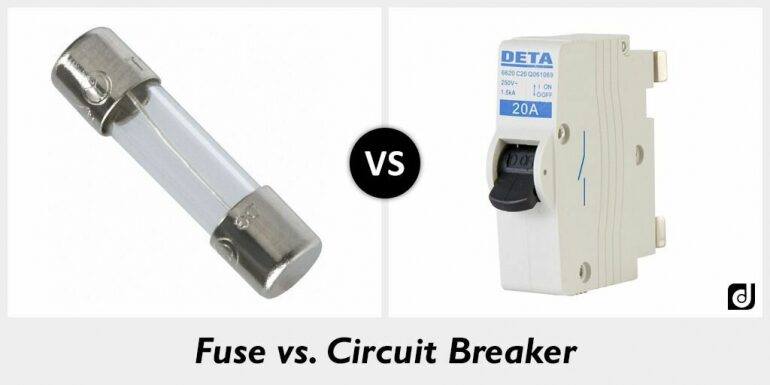
Ever wonder who would win if there was a contest between a fuse and a circuit breaker? When everything is considered – purchase price, maintenance cost, foreseeable service life – a fuse proves to be the winner. Fuses also win out in the maintenance department – where circuit breakers must be checked regularly to make sure contacts are operating properly, a fuses stable nature requires no work at all. National Fuse Products is a leading distributor of North American fuses, European fuses and Japanese fuses. If we don’t have the fuse you’re looking for, we’ll get it for you at a very competitive price.
